Making the transition (Reading Ingredient Labels) – Part 2
Hi all and thanks for taking the time to read this. I hope that you can learn something as well as inform me of new information. The more we know, the better we can live.
In part 1 of this series I discussed the How’s and Why’s of transitioning to a healthier lifestyle, which in my mind, begins with what you eat and use on and in your body everyday. In this post I am going to go into the details about ingredient labels.
So, What does an Ingredient label really tell you? It tells you a lot! By knowing how to read a label you can see very easily how much “real food” is being used in the end product. When I say “real food” I mean that of nature, grown from the ground organically and with little to no processing after it has been harvested. So if it’s not considered to be “real food” what the heck is it you say! Well it is a scientific lab experiment. Yes, that’s right, it was created in lab, by scientist using many tests, test subjects and with many added unnecessary ingredients. These ingredients are usually modeled after the orginal plant but created with the intent of being mass produced quickly and efficiently…but certainly not effectively because it contains NO nutritional value.
In order to sustain itself, fight off sickness, energize and allow you to think clearly your body needs nutrition. Nutrition comes from vitamins and minerals that are found naturally in the earth. Plants grown from untainted (non GMO) seeds, in good soil and that are not sprayed with pesticides, obtain these minerals from the soil and sunlight which produce fruit, vegetables and herbs for us to eat. When we consume food grown in this manner, we obtain the nutrition to feed our cells which enable us to function properly, without dis-ease and problems. When or if a problem arises it is your body telling you that something is off balance, something is missing. Instead of running to a doctor to get a prescription for something that will appear to help but is actually making it worse research and learn what your body is telling you and feed it what it needs.
Now let’s take a look at ingredient labels…
- A simple product contains few ingredients so that means the more ingredients are contained in product the more complex it is, in addition it usually means there was more processing done to the ingredients.
- Ingredients like white sugar, white flour and white rice have been stripped of their nutritional content and are therefore not providing any benefits when you consume them.
- Ingredients are listed in order of the amount used in the end product, therefore if sugar is listed as the first ingredient than it is the main ingredient in the creation process. Let’s take a quick look at the term sugar because it is frequently being concealed or replaced with healthier versions. Sugar is simply a sweetener and sweeteners can come in so many forms so just be aware and make the best decision for you and your family. A list of some of the other names for “sugar” are as follows:
- Agave Nectar
- Barley Malt Syrup
- Corn sweetener
- Corn syrup, or corn syrup solids
- Dehydrated Cane Juice
- Dextrin
- Dextrose
- Fructose
- Fruit juice concentrate
- Glucose
- High-fructose corn syrup
- Honey
- Invert sugar
- Lactose
- Maltodextrin
- Malt syrup
- Maltose
- Maple syrup
- Molasses
- Raw sugar
- Rice Syrup
- Saccharose
- Sorghum or sorghum syrup
- Sucrose
- Syrup
- Treacle
- Turbinado Sugar
- Xylose
- Now let’s take a look at oils, some are beneficial and some are not. Hydrogenation is the process of making certain unsaturated fats or oils more saturated such that they have a higher melting point and a longer shelf-life. If not completed hydrogenated, some unsaturated fats turn into trans-unsaturated fats. This partial hydrogenation is performed when the desired effect is a product that is solid at room temperature but melts upon baking or consumption. The oils that you want to consume contain these key words expeller pressed, unrefined, first cold press and organic.
- Oils like canola (rapeseed), soybean (unless NON GMO but most soybeans are), vegetable (not from any plant matter) are not beneficial
- Oils like olive oil, sunflower, walnut, coconut, almond to name a few are beneficial however make sure they contain some of the keywords listed above.
- Please note that olive oil should not be heated at a high temp when used, if using high temp sunflower or coconut oil are the best
- Coloring or Flavoring (natural flavoring) unless the exact source is specified it is not natural at all. If it is not from a natural source than it was created in a laboratory Yellow #9, Red40, Blue lake etc
- Nitrites, Nitrates, Sulfites and Sulfates (unless naturally occurring) should be avoided as they are used as preservatives but are know to cause health problems.
- Soy protein and Whey protein are actually by products of the processing of soy and whey based products. By products is another term for “left overs”…need I say more?
- Modified Starch or Modified Food Starch, anything this modified or enriched means it was stripped of it’s original nutrients and then some were added back in after/during the processing process…if it’s going to be “added back in” why strip it at all? Truth is what is that what was added back is not in the original form but instead in a scientifically prepared version that is only adequate to maintain the mass production at an efficiency rate required.
- Tocopherols is a form of Vitamin E however you must be careful as there are multiple forms of “Vitamin E”. Â The synthetic Vitamin E (dl-alpha tocopherol) which is the chemically-produced type and is the cheapest and the most widely sold vs Natural Vitamin E (d-alpha-tocopherol) which is isolated from plant-source oils
- Citric acid is a natural preservative and is used to add an acidic, or sour, taste to foods and soft drinks.
- Sodium bicarbonate is baking soda is safe to use (baking soda is natural and great to use as long as there is no aluminum in it)
- Aluminum most often found in deodorant and antiperspirants are harmful and should be avoided.
- “Parfum” or “Fragrance” is a chemically created compound used to product a scent, however they are not natural, although they may be modeled after plant based essential oils. Phthalates are used in these scent compounds are binders and are toxic and known to cause health problems like cancer. These should be avoided at all costs as they are inhaled and known to irritate lungs, skin and cause headaches.
- Sodium laureth sulfate or Sodium lauryl sulfate (SLS) is used widely in the production of soap products and is known to increase suds however it is a chemical concoction and causes skin and eye irritation.
With all that being said, the absolute best way to make sure you are consuming the best ingredients is to buy the loose ingredients and make your items from scratch. You will be amazed at how much you will save by buying in this manner. Most products charge a lot more due to the fact that they are packaged. I recall that I’ve saved $5.00 by buying organic vanilla beans in loose form rather than buying them in the glass or plastic containers they are normally sold in for convenience sake. Unfortunately the ability to purchase ingredients like this is not offered in regular grocery stores so in order to take advantage you will need to visit a natural grocery store. Another advantage is the ability to buy the amount you need, this saves a tremendous amount of money and leads to less waste.
I am by no means telling you what you should and shouldn’t eat. That choice is yours, I just want you to have enough information to make an informed decision. If you have read something that you believe to be incorrect or if you have info that you would like to share please leave a comment or email me at questions@mycocreations.com. And please remember do not take my word for it research and find out for “your cells” 😉
Sorry the images were not clearer my camera was not happy I was taking pictures of this stuff LOL
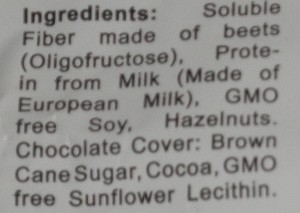
Image A1 – Seitenbacher health bar
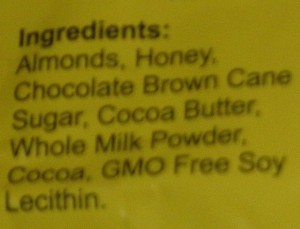
Image A2 – Seitenbacher health bar
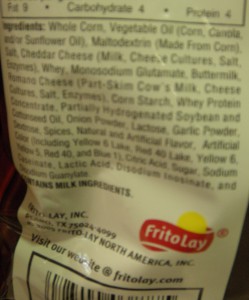
Image A3 – Doritos
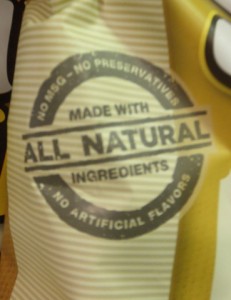
Image A4 – Front of the Sun Chips and the ingredients are listed in A5 (so tricky!)
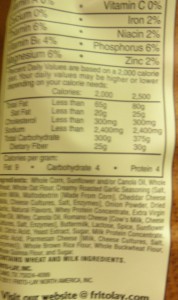
Image A5 – Sun Chips
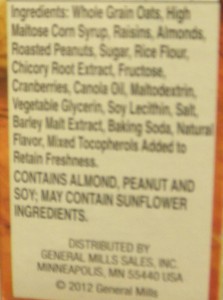
Image A6 – Nature’s Valley Granola bars

